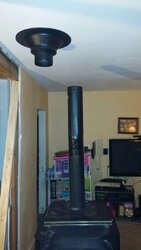What is better a longer run of pipe or a shorter run? I am reinstalling my chimney and am wondering if I want it to be 144" or 120".
Length of Chimney
- Thread starter Typ0
- Start date
-
Active since 1995, Hearth.com is THE place on the internet for free information and advice about wood stoves, pellet stoves and other energy saving equipment.
We strive to provide opinions, articles, discussions and history related to Hearth Products and in a more general sense, energy issues.
We promote the EFFICIENT, RESPONSIBLE, CLEAN and SAFE use of all fuels, whether renewable or fossil.


